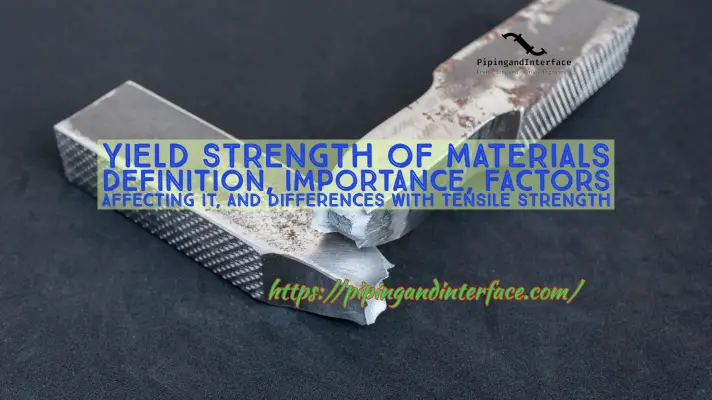Impact testing is a type of mechanical testing used to measure the toughness and strength of a material under high strain rates. It involves subjecting a material to a high-energy impact to determine its ability to withstand sudden loading, such as a sudden impact or shock.
In an impact test, a test specimen is typically placed in a machine called an impact tester, and then a pendulum or hammer is used to strike the specimen at a high velocity. The amount of energy absorbed by the material during the impact is then measured, and this information is used to calculate various properties of the material, such as its ductility, fracture toughness, and impact strength.
Impact testing is commonly used to evaluate the performance of materials used in a wide range of applications, such as aerospace, automotive, and structural engineering. The results of impact testing can help engineers design materials and structures that can withstand high-speed impacts, shocks, and other sudden loading conditions.
Advantages of Impact Test
The advantages of material impact testing are:
Measurement of toughness: Impact testing is an effective way to measure the toughness of a material. Toughness is a critical property in materials that are subjected to sudden loading, and impact testing can provide valuable information about a material’s ability to absorb energy and deform without fracturing.
Identification of material properties: Impact testing can be used to identify a variety of material properties, including ductility, brittleness, and fracture toughness. This information is useful in designing structures that can withstand high-speed impacts and shocks.
Quality control: Impact testing can be used as a quality control measure to ensure that materials meet specific performance criteria. This is particularly important in industries where safety is a concern, such as aerospace and automotive engineering.
Optimization of material selection: Impact testing can help engineers optimize the selection of materials for specific applications. By comparing the impact resistance of different materials, engineers can select the most appropriate material for a given application.
Development of new materials: Impact testing can also be used to develop new materials with improved impact resistance. By analyzing the impact performance of various materials, researchers can identify new materials with desirable properties and develop processes for producing these materials.
Types of Impact Testing Methods
There are several types of impact testing methods available in the industry, including:
Charpy Impact Test: In this method, a test specimen is held at one end and struck on the opposite end with a pendulum hammer. The amount of energy absorbed by the specimen during fracture is measured.
Izod Impact Test: This test method is similar to the Charpy impact test, but the specimen is held vertically, and the hammer strikes the specimen on the same side as the notch.
Drop Weight Impact Test: In this method, a weight is dropped onto a test specimen from a specified height. The amount of energy absorbed by the specimen during fracture is measured.
Ballistic Impact Test: In this method, a projectile is fired at a test specimen. The amount of energy absorbed by the specimen during fracture is measured.
Tensile Impact Test: In this method, a test specimen is pulled apart at a high velocity. The amount of energy absorbed by the specimen during fracture is measured.
Instrumented Impact Test: This method involves the use of instrumentation, such as strain gauges and accelerometers, to measure the force and deformation of a test specimen during impact.
The choice of impact test method depends on factors such as the type of material being tested, the properties of interest, and the specific requirements of the application.
Impact Testing Procedure
The procedure of impact testing varies depending on the specific test method being used. However, the general steps involved in most impact tests are:
- Specimen preparation: A test specimen is prepared from the material of interest in a specific shape and size, and a notch is introduced into the specimen to create a stress concentration point.
- Specimen positioning: The specimen is positioned in the testing machine, with the notch properly aligned for the desired testing configuration.
- Striking the specimen: A pendulum or other impact tool is used to strike the specimen with a controlled amount of energy. The amount of energy used is determined by the specific test method and can be adjusted as needed.
- Recording the results: The amount of energy absorbed by the specimen during fracture is recorded using a measuring system, and other relevant data such as temperature and loading rate may also be recorded.
- Data analysis: The results of the test are analyzed to determine the material’s impact toughness or other relevant properties, and the data is compared to applicable standards and specifications.
Overall, the impact testing procedure is a critical step in understanding the behavior of materials under sudden impacts or shocks and is an important tool for ensuring the safety and reliability of materials and structures in various applications.
Charpy Impact Test Standards
There are different standards that provide guidelines for Charpy Impact Testing. The commonly used standards for Charpy Impact Testing are:
- ASTM A370
- ASTM E23
- ASTM E208
- ASTM D6110
- IS 1757
- ISO 148
- MPIF Standard 40
Difference between Charpy and Izod Impact Test
Charpy Impact Test and Izod Impact Test are two common methods used to determine the impact toughness of a material. While both tests measure a material’s ability to absorb energy during sudden impact or shock loading, there are several differences between the two tests, including:
Specimen orientation: In the Charpy Impact Test, the specimen is placed horizontally and the hammer strikes the side opposite the notch. In the Izod Impact Test, the specimen is placed vertically and the hammer strikes the unnotched side.

Specimen size and shape: Charpy specimens are typically larger and have a V-notch, while Izod specimens are smaller and have a U-notch.
Notch shape: The V-notch used in the Charpy Impact Test produces a sharper notch than the U-notch used in the Izod Impact Test. This can affect the behavior of the material during the test.
Energy measurement: The Charpy Impact Test measures the energy required to fracture the specimen, while the Izod Impact Test measures the energy required to initiate a crack and propagate it through the specimen.
Applications: The Charpy Impact Test is more commonly used in the steel industry, while the Izod Impact Test is more commonly used in the plastics industry.
Overall, both tests provide valuable information about a material’s impact toughness, but the choice of test method depends on factors such as the type of material being tested, the properties of interest, and the specific requirements of the application.
Impact Testing Machine
An impact testing machine is a type of equipment used to perform impact tests on materials. It is designed to apply a controlled amount of energy to a material in order to measure its resistance to sudden impacts or shocks.
The machine typically consists of a pendulum or striker that is raised to a predetermined height and then released to strike the test specimen. The energy of the impact is measured by sensors that are integrated into the machine, and the results are recorded and analyzed to determine the material’s impact toughness or other relevant properties.
There are different types of impact testing machines available in the industry, including the Charpy Impact Testing Machine and the Izod Impact Testing Machine, which use different test configurations and specimen geometries to measure the impact strength of materials.
Overall, the impact testing machine is a critical tool in materials science and engineering that provides valuable information about a material’s ability to withstand sudden impacts or shocks, and it is used in a wide range of applications, including manufacturing, quality control, and research and development.
MDMT and Impact Testing
MDMT (Minimum Design Metal Temperature) is related to impact testing because it is the lowest temperature at which a material or equipment can operate safely without undergoing brittle fracture due to low-temperature embrittlement. In other words, it is the temperature below which the material or equipment becomes susceptible to sudden failure under impact or shock loading.
To ensure that materials and equipment can withstand the MDMT, impact testing is often performed to measure their impact toughness at low temperatures. This is especially important for materials and equipment used in cold environments, such as offshore drilling rigs or pipelines operating in Arctic conditions.
The impact test results can provide valuable information about the behavior of the material or equipment at low temperatures and help engineers design structures that are resistant to sudden impacts or shocks in cold environments. By knowing the impact toughness of the material at low temperatures, engineers can also determine the appropriate design codes and standards to follow for safe and reliable operation.







